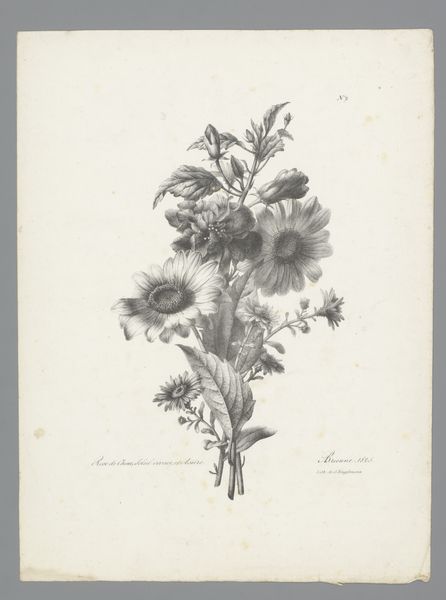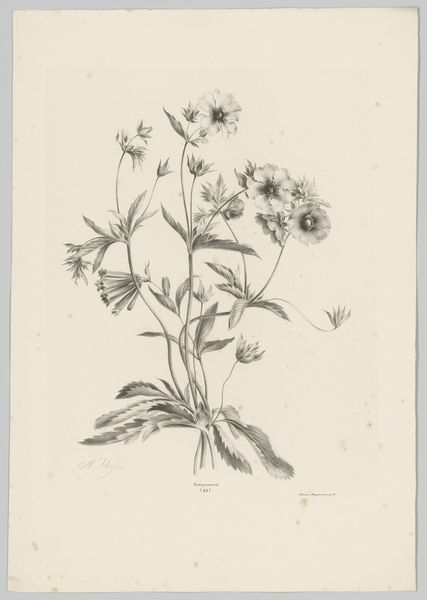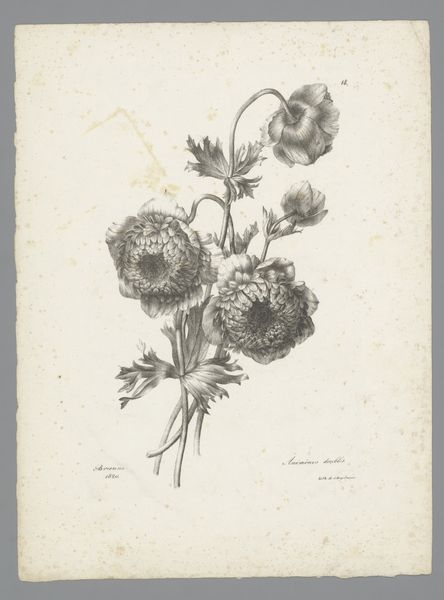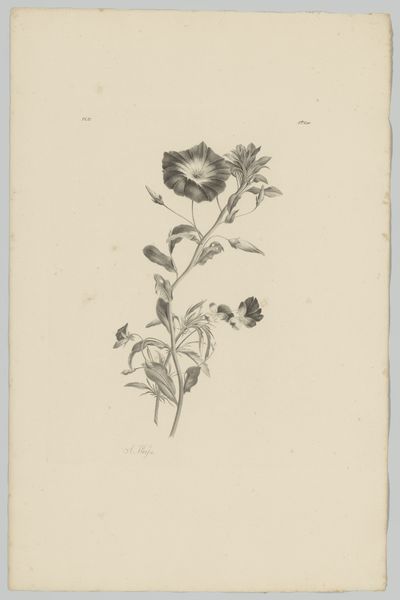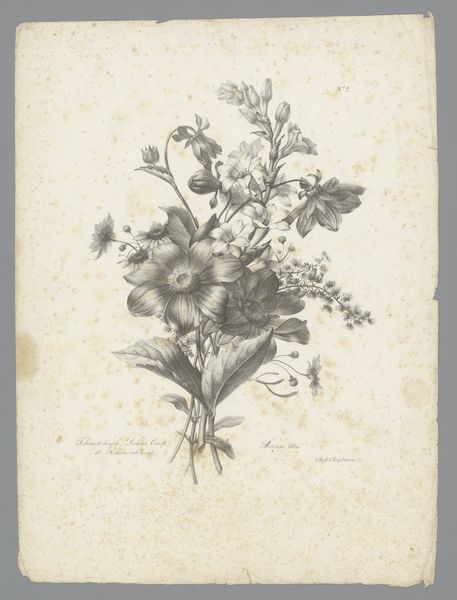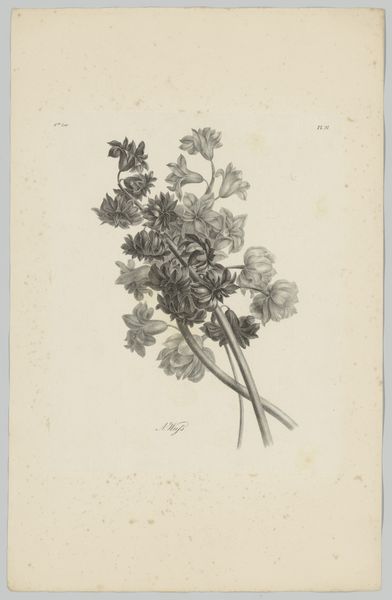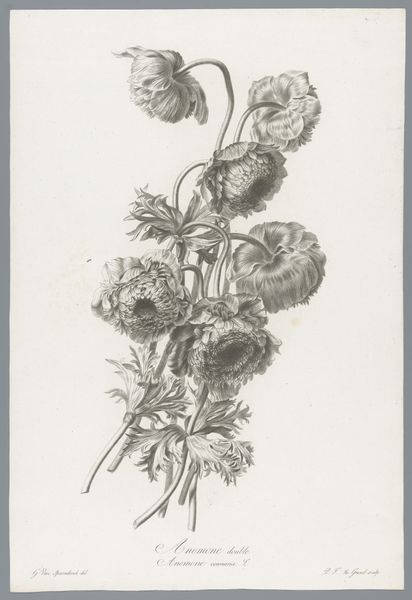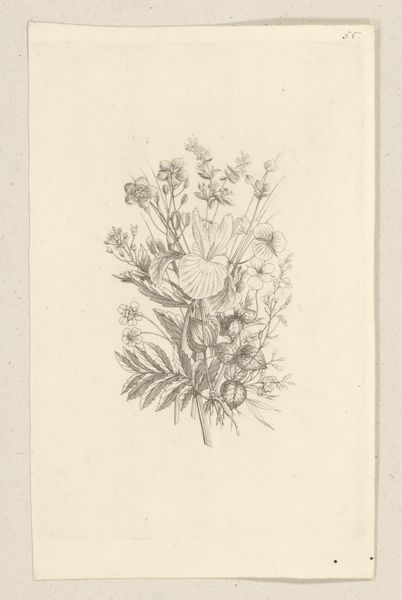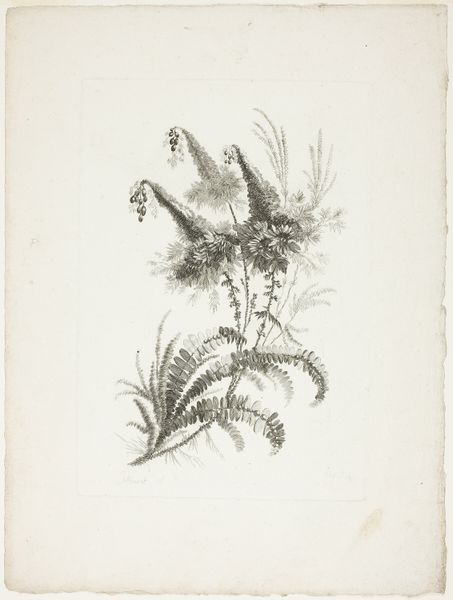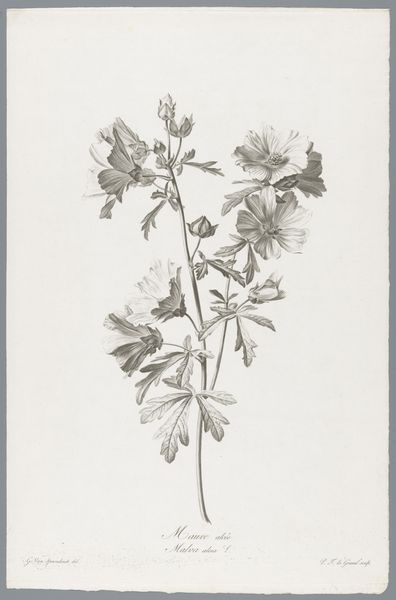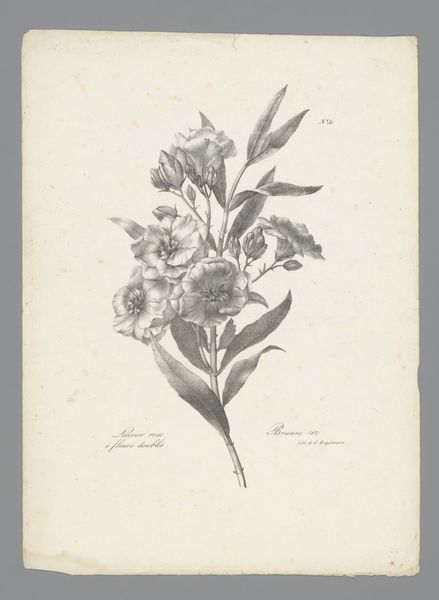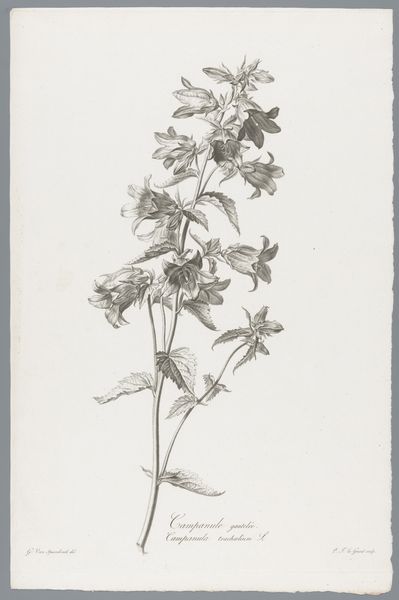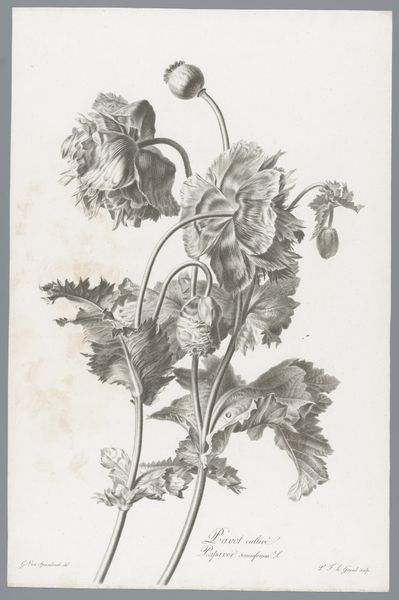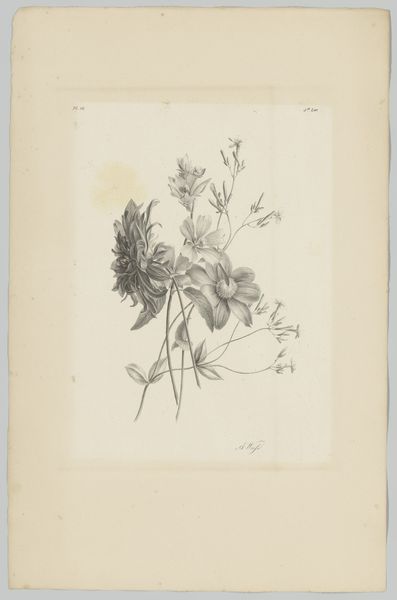
drawing, paper, pencil
#
drawing
#
paper
#
pencil
#
academic-art
#
realism
Dimensions: height 492 mm, width 336 mm
Copyright: Rijks Museum: Open Domain
Curator: This pencil drawing from around 1800, entitled "Chinese aster", is the work of Pierre François Legrand. Editor: It's understated but arresting, almost ghostly. The monochromatic palette gives it an ethereal quality, as if these flowers are specimens viewed under glass in a Victorian study. Curator: Absolutely. Legrand was a master of botanical illustration, a genre gaining traction at this time as science began to inform how the world was perceived. Museums and scientific institutions certainly provided an audience and framework for these studies. Editor: I'm intrigued by that tension—the supposed objectivity of scientific observation juxtaposed with the very human act of artistic representation. Doesn't the artist's hand inevitably impart a subjective layer to something that's presented as purely objective? Curator: It’s a valid point. Consider the cultural backdrop, though. Realism and academic art principles dominated. Artists like Legrand aimed for scientific accuracy, serving emerging fields like botany. Art served as documentation. Editor: Still, choice is involved, even in what is considered “objective” observation. Why render this particular aster and not another? How is that act tied to colonial projects in its very way of ordering nature as a tool? Curator: I concede. And Legrand lived through a period of immense political and social upheaval—the French Revolution and its aftermath. He was commissioned for scientific work so probably avoided overt political expression in art, he needed a steady stream of income, as well, so overt social commentary would have hampered his chances to survive. Editor: Precisely, which reveals art's ineluctable socio-political grounding, its connection to economic imperatives. Can something like a flower not be inherently political? Or is that something we, in this time, impose upon this pencil drawing? Curator: It's food for thought. Looking closely, one really can appreciate Legrand’s meticulous attention to detail. Editor: Indeed. And hopefully it can incite broader reflection on what we look at and what, for various historical reasons tied to identity and power, we fail to fully see.
Comments
No comments
Be the first to comment and join the conversation on the ultimate creative platform.
